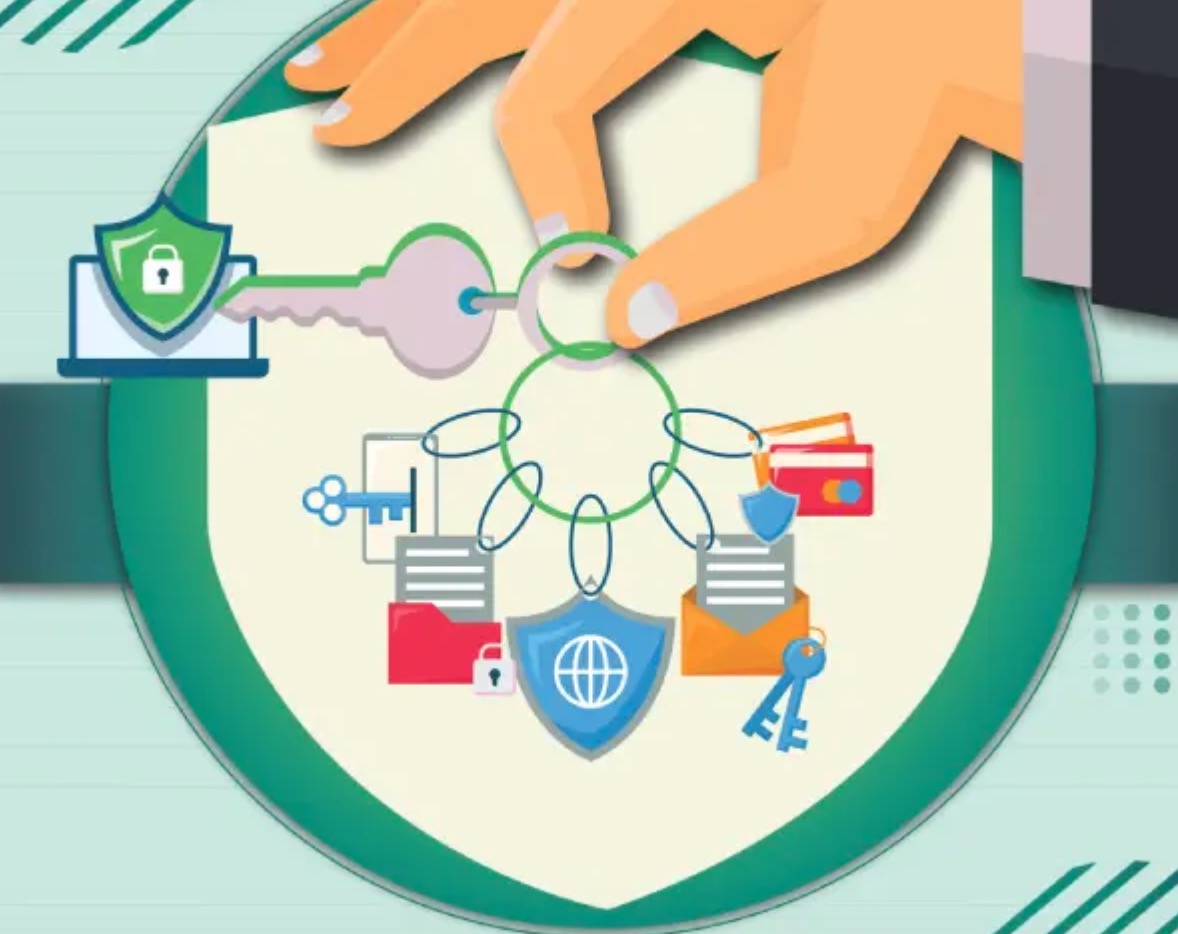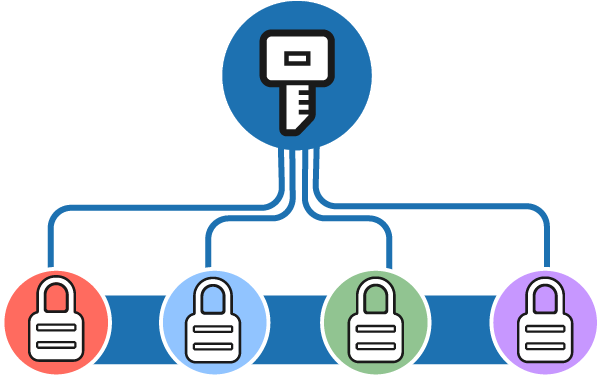Federated Identity Management: What is It and How Does It Work?
In today's digital environment, more and more enterprises and organizations are adopting federated identity management (FIM) to simplify user authentication across various platforms and applications. FIAM allows users to access multiple services using a single set of credentials, significantly enhancing user experience and security. In this post, we will explore everything about FIAM and introduce a more reliable way to improve security.
Part 1. What is Federated Identity Management?
Federated Identity Management (FIM) is a security framework designed to manage user identities and access permissions across different identity providers (IdPs). This mechanism enables users to seamlessly access various systems and domains without having to create and maintain separate accounts for each system.
In short, FIM allows users to log in and access multiple applications or platforms using a single identity.

Part 2. How Does Federated Identity Management Work?
Federated Identity Management works through a series of steps to enable identity and access management across systems. First, the user completes authentication with an Identity Provider (IdP), typically using a username and password, and may also include multi-factor authentication.
Once authenticated, the IdP generates a secure token containing the user's identity information. The user then uses this token to request access to other systems, and the Service Provider verifies the token's validity and grants the user appropriate access based on the permissions within the token.
This process allows users to seamlessly transition between different applications without repeatedly entering their credentials while enhancing security.
Part 3. Federated Identity Management Applications
Federated Identity Management is a widely used identity management solution across various fields, including enterprises, education, government, and cloud computing.
It enhances user experience and security by centrally managing user identities and access controls, allowing users to seamlessly switch between different systems without needing to register multiple times, making it especially important in today's digital environment.
Below are the details of each application:
1Enterprise Environment
In large enterprises, FIM allows employees to access various internal applications and services using a single identity, such as Enterprise Resource Planning (ERP), Customer Relationship Management (CRM) systems, and file-sharing platforms.
By centrally managing user identities and access permissions, companies can better control employee access to sensitive information, enhancing security and compliance.

2Educational Institutions
Many universities and educational institutions adopt FIM to simplify access management for students and staff. Students can use the identity provided by the institution to access various Learning Management Systems (LMS), library resources, and online course platforms.
This not only improves user experience but also reduces the demand for technical support, as students do not need to remember multiple account credentials.
3Government Services
Government agencies use FIM to provide citizens with convenient access to various online services, such as social security, taxation, and public service applications.
With federated identity management, users need to log in only once to access multiple services, improving availability and security while reducing the hassle of repeated registrations.

4Cloud Computing and SaaS Applications
As cloud computing and Software as a Service (SaaS) become more prevalent, FIM has become increasingly important. Organizations can use FIM to centrally manage access to multiple cloud services, ensuring that only authenticated users can access sensitive data in the cloud. This approach enhances flexibility while simplifying user management processes.
5Mobile Applications
In mobile application environments, FIM enables users to seamlessly switch between multiple mobile applications using a single identity. For example, users can log in using their social media accounts or third-party identities, making it easier to access the functionalities and data of various applications, thereby improving the user experience.
Part 4. Pros & Cons of Federated Identity Management
Pros of Federated Identity Management
Simplified User Experience
FIM allows users to seamlessly switch between multiple systems and applications using a single identity, reducing the need for multiple usernames and passwords. This simplified login process enhances user convenience and satisfaction.
Increased Management Efficiency
FIM enables organizations to centrally manage user identities and permissions, streamlining user management processes. This not only reduces IT support workload but also enhances the ability to audit and monitor user permissions.
Flexibility and Scalability
As organizational needs change, FIM can easily adapt to the integration of new applications and services, providing flexible access across different platforms and services, thus improving overall business efficiency.
Reduced Redundant Registration
Users only need to register with one identity provider to access multiple services, avoiding the tedious process of filling out information and saving time.

Cons of Federated Identity Management
System Complexity
Implementing and maintaining FIM may require a high level of technical knowledge, especially when integrating different identity providers and service providers. The complexity of system setup can lead to increased initial deployment and ongoing maintenance costs.
Single Point of Failure Risk
The centralized nature of FIM means that if the identity provider fails, it could affect all services relying on that identity. Any failure may prevent users from accessing multiple applications, causing business interruptions.
Security Risks
Although FIM improves security, if identity information is compromised, attackers may gain access to multiple systems. Therefore, it is crucial to ensure high levels of protection for identity information.
Compliance Challenges
Different regions and industries have varying requirements regarding data privacy and security. Ensuring compliance with all relevant regulations and standards when implementing FIM can increase the complexity of compliance efforts.

Part 5. How to Make Federated Identity and Access More Secure?
While Federated Identity Management provides a certain level of security, it still faces challenges such as security risks and compliance issues. Therefore, enhancing the security of FIM is a crucial step in ensuring the information security of enterprises and organizations.
To better protect identity and access control, combining FIM with mobile device management can significantly strengthen the overall security of FIM, as MDM can provide provide features such as device enrollment, policy enforcement, remote wipe capabilities, and application management. Let’s see how FIM and MDM can work together.
1Enhanced Security
FIAM provides secure authentication, ensuring that only authorized users can access enterprise resources. MDM complements this by enforcing security policies on mobile devices, ensuring they meet compliance standards. Together, they create a robust security framework that protects sensitive data.
2Improved User Experience
With FIAM's SSO capabilities, users can access applications on their mobile devices without repeatedly entering credentials. MDM ensures that these devices are secure and compliant, allowing for seamless access to company resources while minimizing disruptions.
3Dynamic Access Control
FIAM can dynamically adjust user access based on their identity and role. MDM utilizes this identity information to enforce specific policies on devices. For instance, a user with a high-security clearance may be granted access to sensitive data on a compliant device, while others may have restricted access.
4Compliance and Monitoring
Both FIAM and MDM play vital roles in maintaining compliance with data protection regulations. FIAM provides transparency in user authentication processes, while MDM monitors device compliance and security status. This synergy helps organizations meet regulatory requirements more effectively.
In Summary
Combining federated identity management with mobile device management not only enhances security but also improves user management efficiency. By implementing multi-layered security measures, organizations can better control access to sensitive information and protect data integrity, ensuring safe and efficient operations in the digital environment.





Leave a Reply.